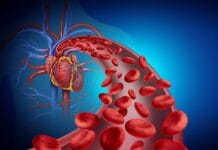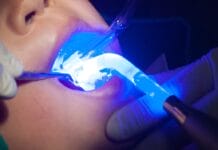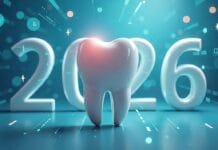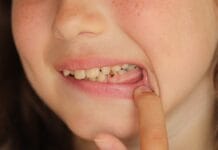Are you in need of CE credits? If so, check out our peer-reviewed, self-study CE courses here.
Test Your Tooth Eruption Knowledge
1. Tooth eruption requires bone remodeling processes. This includes bone formation and resorption mechanisms.
Tooth eruption is a result of bone remodeling processes, which include both bone formation and bone resorption. Bone resorption provides a pathway for the tooth to emerge, while bone formation at the apices propels the tooth toward the occlusal plane.1,2
References
1. Jain, P., Rathee, M. (2023, September 20). Anatomy, Head and Neck, Tooth Eruption. StatPearls. https://www.ncbi.nlm.nih.gov/books/NBK549878/
2. Stonehouse-Smith, D., Ota, L., Seehra, J., et al. How Do Teeth Erupt?. Br Dent J. 2024; 237(3): 217-221. https://pmc.ncbi.nlm.nih.gov/articles/PMC11315668/
2. Which of the following is an organized connective tissue that envelops the tooth germ during the early stages of tooth development, later giving rise to the periodontal ligament?
The dental follicle is an organized connective tissue that envelops the tooth germ and later gives rise to the periodontal ligament. It also plays a crucial role in the timely eruption and exfoliation of teeth. Intact dental follicles are required for tooth eruption during the intraosseous phase, while the periodontal ligament and root are not necessary for eruption to occur. However, the collagen fibers within the periodontal ligament are believed to be responsible for elevating the tooth from the gingival to the occlusal plane during the supraosseous phase of eruption.1,2
References
1. Jain, P., Rathee, M. (2023, September 20). Anatomy, Head and Neck, Tooth Eruption. StatPearls. https://www.ncbi.nlm.nih.gov/books/NBK549878/
2. Stonehouse-Smith, D., Ota, L., Seehra, J., et al. How Do Teeth Erupt?. Br Dent J. 2024; 237(3): 217-221. https://pmc.ncbi.nlm.nih.gov/articles/PMC11315668/
3. The initial teeth to emerge in the oral cavity of a child are the deciduous maxillary central incisors, typically appearing around 5 to 8 months of age.
While eruption timing for deciduous and permanent teeth can vary, the eruption sequence is more significant than the timing. The first teeth to emerge in children are the deciduous mandibular central incisors, typically appearing around 5 to 8 months of age. A variation of up to 6 months before or after the typical eruption date is usually within the normal range of eruption timing.1
Reference
1. Jain, P., Rathee, M. (2023, September 20). Anatomy, Head and Neck, Tooth Eruption. StatPearls. https://www.ncbi.nlm.nih.gov/books/NBK549878/
4. Which of the following releases proteins that are hypothesized to induce symptoms observed in teething infants?
During mucosal penetration and eruption, proteins derived from the enamel matrix are released before and during eruption. These proteins are hypothesized to contribute to hypersensitivity reactions associated with symptoms observed in infants during teething, such as fever, rhinitis, and localized erythema.1
Reference
1. Jain, P., Rathee, M. (2023, September 20). Anatomy, Head and Neck, Tooth Eruption. StatPearls. https://www.ncbi.nlm.nih.gov/books/NBK549878/
5. An ectopic eruption is a tooth that follows a path that deviates from its usual path of eruption.
An ectopic eruption is when a tooth deviates from the usual path of eruption. Timely diagnosis and treatment are essential to prevent malocclusion. There are multiple theories regarding the etiology of ectopic eruption, including localized traumatic injury, the presence of fibrous tissue, supernumerary teeth, arch length deficiency, and retention or premature loss of deciduous teeth.1,2
Supernumerary teeth that emerge in the nasal cavity are a form of ectopic eruption and are referred to as "nasal teeth." Nasal teeth can be symptomatic or asymptomatic. When symptomatic, symptoms include facial pain, nasal cavity obstruction, headaches, nosebleeds, foul-smelling nasal discharge, external nasal deformities, and nasolacrimal duct obstruction.1
References
1. Jain, P., Rathee, M. (2023, September 20). Anatomy, Head and Neck, Tooth Eruption. StatPearls. https://www.ncbi.nlm.nih.gov/books/NBK549878/
2. Yaseen, S.M., Naik, S., Uloopi, K.S. Ectopic Eruption - A Review and Case Report. Contemp Clin Dent. 2011; 2(1): 3-7. https://pmc.ncbi.nlm.nih.gov/articles/PMC3220171/
6. Which of the following describes teeth already present in the oral cavity at birth?
Teeth present at birth are termed natal teeth, while those that emerge within the first month of life are referred to as neonatal teeth. Natal teeth are three times more common than neonatal teeth. The primary site of natal teeth is the mandible, particularly the mandibular incisors.1
Natal teeth do not have complete root development, making the teeth mobile and a risk for swallowing or aspiration. Specific syndromes are associated with the presence of natal and neonatal teeth, including chondroectodermal dysplasia, Rubinstein-Taybi syndrome, Pierre Robin syndrome, neonatal progeria, cleft lip or palate, ectodermal dysplasia, craniofacial dysostosis, and Down syndrome.1
Reference
1. Jain, P., Rathee, M. (2023, September 20). Anatomy, Head and Neck, Tooth Eruption. StatPearls. https://www.ncbi.nlm.nih.gov/books/NBK549878/
7. Which of the following is associated with delayed eruption?
Multiple factors can cause delayed eruption, including localized trauma, medication usage, and malnutrition. Examples of localized trauma include mucosal barriers, gingival fibromatosis, odontogenic and nonodontogenic tumors, premature loss of primary teeth, and radiation damage.1
Prolonged chemotherapy or medication use can also delay eruption. Medications implicated include aspirin, acetaminophen, ibuprofen, indomethacin, and bisphosphonates.1
Chronic and prolonged malnutrition, often associated with vitamin deficiencies during childhood, contributes to delayed tooth eruption.1
Additionally, various syndromes are associated with delayed eruption, such as Down syndrome, Gardner syndrome, cleidocranial dysostosis, anhidrotic ectodermal dysplasia, Hutchinson-Gilford syndrome, Bloch-Sulzberger syndrome, Apert syndrome, hypothyroidism, and Axenfeld-Rieger syndrome.1
Reference
1. Jain, P., Rathee, M. (2023, September 20). Anatomy, Head and Neck, Tooth Eruption. StatPearls. https://www.ncbi.nlm.nih.gov/books/NBK549878/












